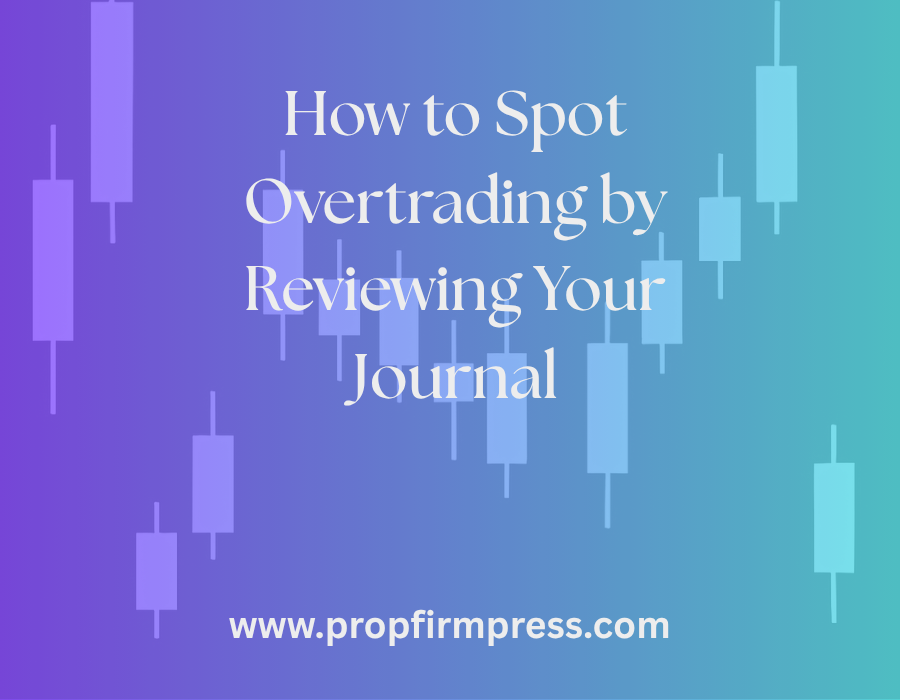How to Spot Overtrading by Reviewing Your Journal
Overtrading is one of the fastest ways to blow a prop firm evaluation or funded account. It often happens gradually, triggered by emotion, boredom, or the false belief that more trades mean more profit. But the real danger of overtrading is that it’s hard to recognize in the moment. That’s where your trading journal becomes your most powerful diagnostic tool.
What Is Overtrading, Really?
Overtrading isn’t just about placing too many trades. It’s about deviating from your trading plan, taking impulsive setups, increasing frequency to chase losses or amplify wins, or trading when market conditions don’t suit your strategy. Prop firms like The Legends Trading or Instant Funding will often penalize this behavior with rule violations or inconsistent performance reviews.
The Signs Hidden in Your Journal
If you’re keeping a daily trading journal, here are the key red flags to look for:
- High trade frequency: A sharp increase in trades per day or week without a change in strategy.
- Deviation from setups: Trades that don’t match your usual criteria, tagged with “FOMO” or “felt rushed.”
- Emotional tags: Notes like “wanted to make up for a loss” or “saw others posting profits.”
- Inconsistent sizing: Lot size or contract volume increasing after a losing streak or win streak.
- Lack of rest days: Trading every single session without breaks or reflection.
These patterns are often invisible until you read through multiple days of journal entries side by side.
Using Visual Data to Catch It Early
Many journaling tools like Notion, TraderSync, or Edgewonk allow you to tag trades and visualize them. This can help identify:
- Which days you tend to overtrade (e.g., Mondays after a bad week)
- What emotional states lead to high-frequency trading
- Your average risk-per-trade when you’re in “tilt” mode
If you’re using tools like the Prop Firm Press Journal Sheets, be sure to circle or flag any day where trade volume exceeds your average. These visual cues help you develop awareness before problems escalate.
Behavioral Patterns That Lead to Overtrading
When you analyze your journal, be on the lookout for recurring psychological triggers:
- Revenge trading: After a large loss, trying to “win it back” too quickly.
- Performance pressure: Nearing the end of a challenge, taking more trades to hit a profit target.
- Boredom or idle time: Trading just to feel active, especially during low-volume sessions.
- Social media influence: Seeing other traders post big wins and trying to keep up.
Overtrading isn’t always caused by greed—it’s often rooted in emotional discomfort.
How to Design Your Journal to Catch It
To make sure your journal highlights overtrading tendencies, include these daily entries:
- Trade count goal: Set a maximum trades-per-day limit in your routine and record if it was breached.
- Setup validation: Log whether each trade followed a pre-defined playbook.
- Impulse flag: Mark any trade made without clear rationale or with hesitation.
- Emotional rating: Rate your stress or confidence before and after trading.
Reviewing these fields regularly helps keep your behavior aligned with your trading edge—not your impulses.
Weekly Reviews Are the Key
At the end of each week, flip through your entries and ask:
- Did I stay within my max trade limit?
- How many setups were clean vs. questionable?
- What percentage of my trades came from emotion?
- Did I increase trade size after losses or wins?
This review process turns your journal into a mirror. It forces honesty and helps you take corrective action before one bad week snowballs into a reset or blown account.
Journaling Habits That Prevent Overtrading
- Set a rule for trade quantity: Write it at the top of your journal each morning.
- Log pre-trade intention: This keeps you accountable before execution.
- Use a checklist: Only take trades that meet a specific checklist of criteria.
- Reflect mid-day: Journaling at lunch can break the pattern before it continues.
These habits create a built-in pause that keeps your trading intentional—not reactive.
Final Note
Overtrading often hides in plain sight. But your journal tells the truth. It’s a mirror. Use it to see what’s really going on beneath the charts. The more you understand your own behaviors, the easier it becomes to stop harmful patterns and stay funded for the long haul.
